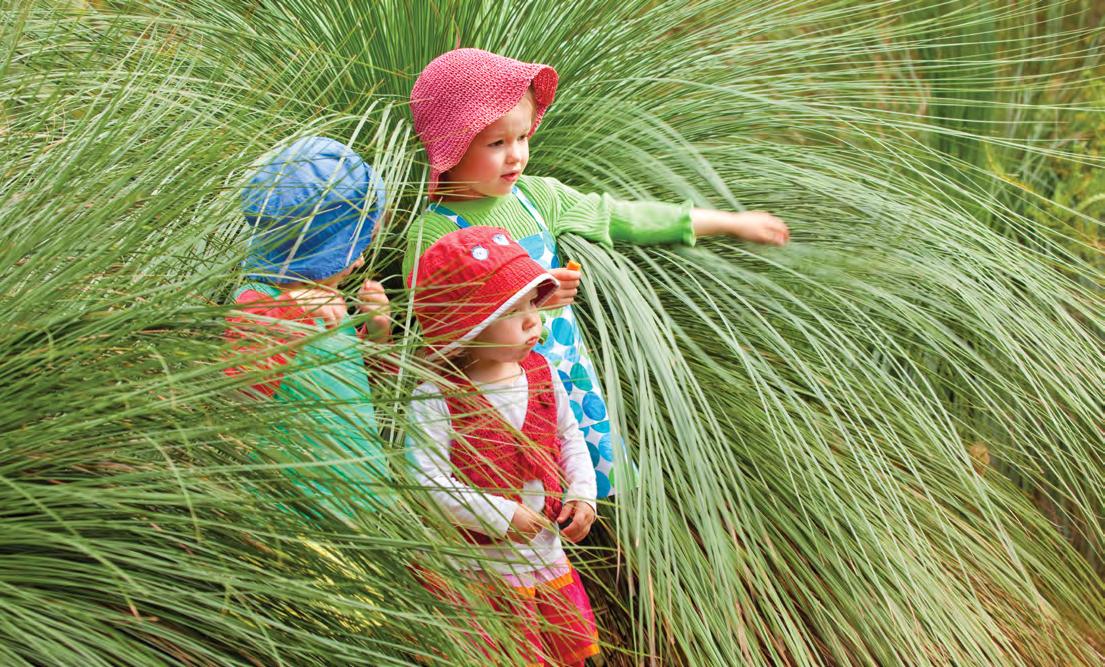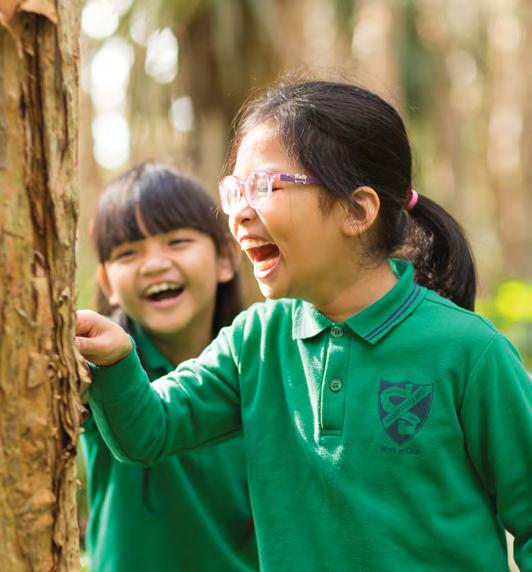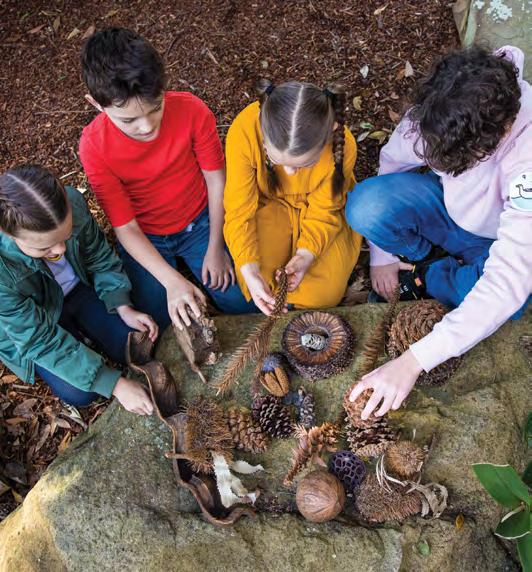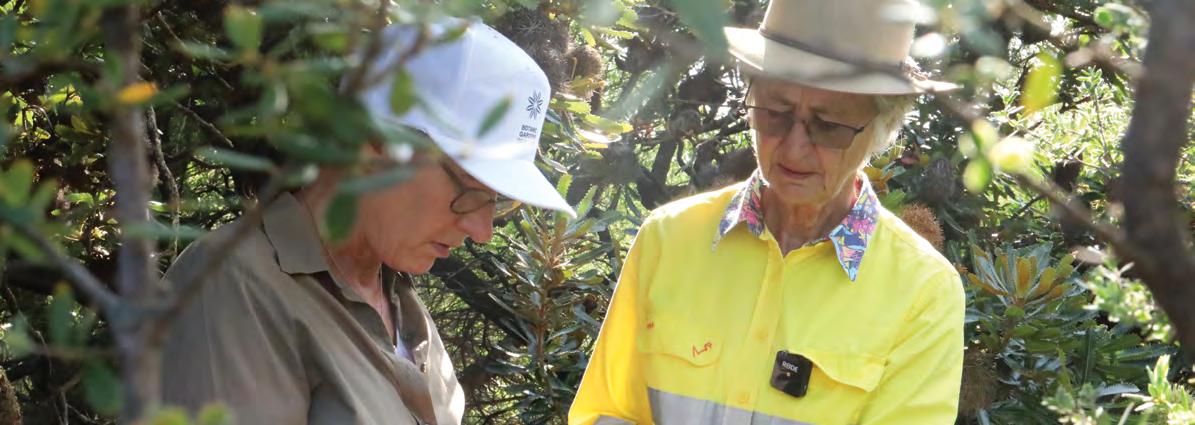
5 minute read
Connecting to nature
Experiencing the wonder of nature should be accessible for all children, which is why the Botanic Gardens of Sydney is investing in a new Botanic Learning Centre.
In an age where green time is increasingly replaced with screen time, many children are growing up feeling disconnected from the natural world. This disconnection is known as nature-deficit disorder – a term that resonates deeply with educators and environmentalists who see first-hand the value of outdoor learning.
Advertisement
At the Botanic Gardens of Sydney, a dedicated Education Program is working to help reverse this trend, providing transformative, hands-on experiences in nature for more than 7,485 school children and 18,525 students each year – and counting. Now, through the End of Financial Year campaign, the Gardens are fundraising for a new, fit-forpurpose Botanic Learning Centre – a vital new space to nurture lifelong connections with nature and meet the growing demand for immersive environmental education.
What is nature-deficit disorder?
Coined by author Richard Louv in his book Last Child in the Woods, nature-deficit disorder refers to the psychological, physical and cognitive costs of a life spent indoors and away from the natural world. Compared with previous generations, when bike rides, tree climbing and backyard adventures were staples of childhood, today’s children are far more likely to spend the majority of their free time online.
“Outdoor play fosters skills and provides a context for learning things that are difficult to teach in the classroom,” says Kate Heywood, Head of Education at Botanic Gardens of Sydney. “Things like risky play, paying close, quiet attention to the details of something in nature, like the veins of a leaf or the patterns in the bark of a tree and learning how to really look at a plant are all things that can ideally be experienced in a botanic garden.”
The power of outdoor learning
At the heart of the Botanic Gardens’ approach is the belief that early exposure to nature lays the foundation for environmental stewardship later in life. Through programs like Early Years, School Holiday Programs, and culturally rich initiatives like Connection & Country, children are encouraged to engage in fun and educational outdoor activities.


“I have seen the impact of nature-based learning both first-hand and in research,” Kate says. “Just recently, I saw a group of Kindergarten children laughing and squealing as they threw the fallen leaves from a deciduous tree around, including at their teacher! What a wonderful memory they are making – connections with their teacher and each other and with the tree and the grass; a beautiful experience on its own, but imagine the wonderful conversations and writing that could happen following this when they are back at school too.”
These programs are not only fun, they’re educational too. They align across a range of Key Learning Areas and Cross Curriculum Priorities, including Aboriginal and Torres Strait Islander histories and cultures. “The majority of our programs are focused on cracking open some of the big concepts in Science, like adaptation and diseases that affect plants. But we also have programs that incorporate Visual Art, Geographical concepts and First Nations knowledges,” Kate says.
The Botanic Learning Centre
Currently, the existing Education Centre at the Royal Botanic Garden Sydney welcomes more than 26,000 visitors a year, including 7,485 school children. But demand continues to grow – and the space is nearing capacity.
That’s where the new Botanic Learning Centre comes in. Designed to be an inclusive, interactive and engaging gateway to the Gardens, the Centre will dramatically expand access to nature education, increasing capacity by an additional 100 students per day.
“An updated Learning Centre will mean that we can provide even more nature-based learning experiences to visitors of all ages,” Kate says. “My hope is that it will provide a welcoming, engaging ‘landing point’ for visitors who are coming for our learning programs, and which pays respect to the Country that it sits on. We’re really focusing on creating a space that connects the indoors with outdoors, that is inclusive, interactive and encourages people to connect with plants.”
Addressing access and equity
As cost-of-living pressures rise, many schools are finding it harder to justify excursions. “We’ve seen a bit of a drop in the number of children coming to our Gardens,” Kate says. “Overwhelmingly, teachers are telling us that the cost of transport has become prohibitive.”
But access to outdoor learning shouldn’t depend on a school’s postcode or budget, which is why the Education Access Program is so important and why further funding would help reach even more students and schools, creating greater impact.
“We are also currently in the process of incorporating transport costs into the Access program, meaning we can reach even more children to experience the awe and wonder of the plant world,” Kate says.
Creating lifelong Impact
From potting seedlings and building shelters in school holiday workshops to learning how Aboriginal people use plants in First Nations-led programs, every activity is designed to cultivate curiosity, confidence and care.
“Our Early Years Programs are all about play and being playful in nature,” Kate says. “They include elements of Garden discovery, interactive games and nature-inspired stories. We really want our littlest learners to have a positive experience in nature and be comfortable with interacting with plants and animals.
“We run programs during school holidays as well, which have a focus on being outdoors and having fun – and hopefully some learning along the way! Children engage in activities like potting seedlings, water play and building shelters. Our First Nations programs are very soughtafter and give children the opportunity to learn about how Aboriginal people used and still use plants for different purposes, as well as their special connection to Country.”
Rewilding the future
Nature-deficit disorder may not be an official diagnosis, but its symptoms are real, and the effects are farreaching. By investing in outdoor education and equitable access, the Botanic Gardens of Sydney is tackling the problem head-on. And with your help, even more young Australians can grow up with an appreciation for the great outdoors and our planet.
KATE HEYWOOD, HEAD OF EDUCATION
How You Can Help
As the End of the Financial Year approaches, donations to the project will go directly toward bringing this vision to life. It’s an opportunity for individuals, families and businesses to make a tangible difference for future generations.
$15: Provide tools for a young explorer
Number of schools booked:
How the Access Education Program makes a difference 32 1,835
Could supply a child with a nature journaling kit, including art materials, to record what they see, hear and feel while learning in the Gardens.
$50: Equip a future scientist
Could fund a magnifying lens/soil tester/plant ID kit for use by school students in the interactive science education laboratory.
$100: Sponsor a student’s holiday program
Number of students booked:
Subsidised excursions to the value of:
Ages of students:
$30,699
5-18yrs
Could fund 4 students to attend a 1.5-hour school holiday program, including hands-on activities, games, or guided tour with an education officer in the Gardens.
$500: Equip a learning space
Could fund ‘flexi desks’ and a storage unit for an indoor education classroom to create a space where children and adults can participate in handson learning programs, even in wet weather.
If you want to donate to the Education program you can do it today by using this code.











